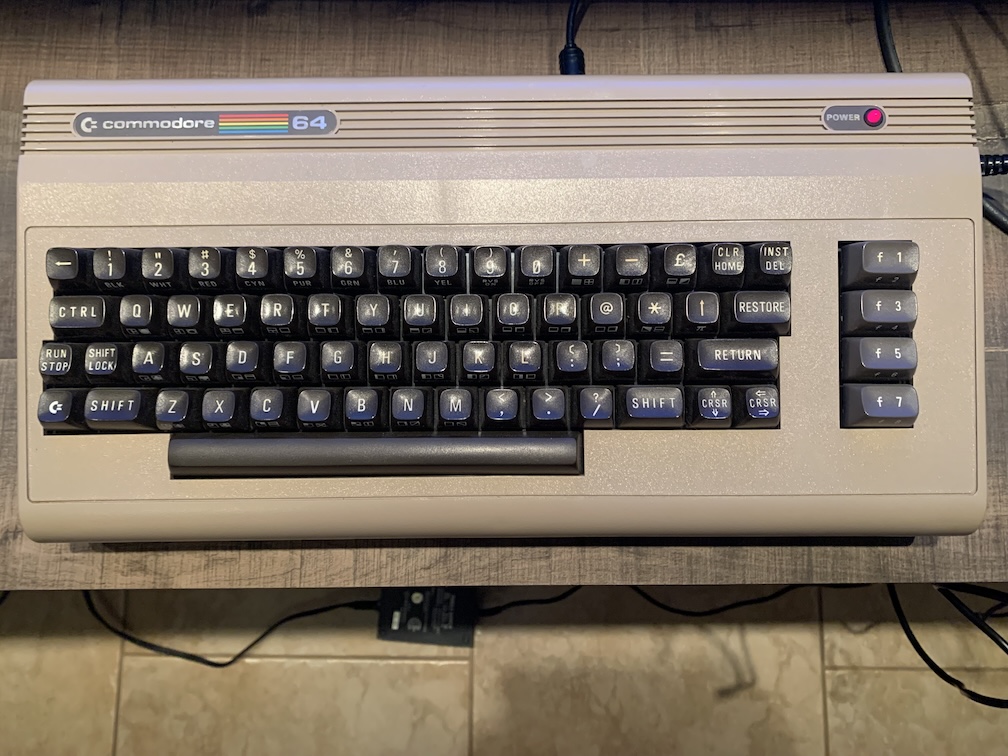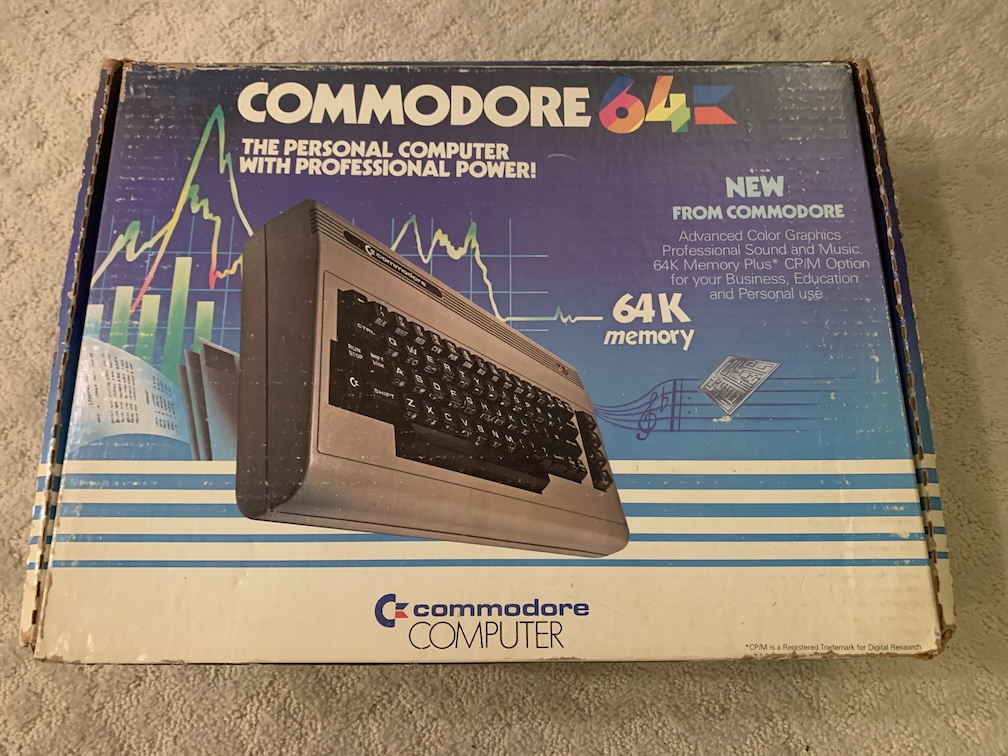posted: March 23, 2024
tl;dr: I have a hard time remembering my second computer, but I will never forget my first...
My first computer was a Commodore 64, purchased early in my college days at Cornell. By the way, the "64" was a reference to how much memory the computer shipped with: not 64GB, or 64MB, but 64KB. I added a monochrome monitor, a floppy disk driver, an Epson MX-80 dot matrix printer, and a 300 baud modem to it to complete my setup. I kept the Commodore 64 and the floppy drive until just recently, when as part of my latest round of downsizing I sold it on eBay. I hadn’t turned it on in years, so the boxes were gathering dust and taking up space. Years ago I decided that the best way to preserve items was to digitally photograph them, write down some memories of what they meant to me, and put the digital content in the cloud. So that’s what I’m doing with my first computer.
The Commodore 64 was a ground-breaking personal computer for its time, and a great value. The Apple Macintosh was not yet on the market, so there were not yet any consumer-oriented (and priced) computers with graphical user interfaces. The main competitors at the time were:

The Commodore 64 had a variety of ports and connectors on the back and sides
The closest competition for the Commodore 64 was the Apple II+, which was the first computer I ever used in an educational setting. My junior year I took my high school’s one computer class, a six month course called “Computer Math”, taught by one of the math teachers who occasionally grumbled that he could be making more money programming computers in industry than teaching BASIC to high schoolers. My high school of nearly 1200 students had two Apple II+ computers in a very small computer room my junior year. They acquired two more for my senior year, so I thought the lucky kids taking Computer Math after I did were swimming in computers. I was in that small computer room when the principal came on the P.A. system to announce that there had been an assassination attempt on President Reagan. “That’s wild,” I thought, and then went back to my programming assignment. Sometimes I wish I still had that same level of disregard for the news.

The original box for my Commodore 64
The Apple II+ was a great computer for its day, but like Apple products to this day, it was priced at a premium. The Commodore 64 pretty much matched it, feature for feature, for a lower price. Both had typewriter-style keyboards, optional floppy disk drives (although the II+’s was faster), support for color and sound and printers, and were popular platforms for gaming. Both ran BASIC. The main feature the II+ had that the Commodore 64 lacked was expansion slots for plug-in cards. That made the II+’s case much bigger. The case itself was sturdy, which was beneficial when I once saw my brother slam the top of an Apple II+ in frustration when it, as computers do, did exactly what he told it to do and not what he wanted it to do. The Commodore 64 was more fragile, and I worried that he would do the same with it and break it.
In the end the more compact price and size carried the day, and I bought my first computer and soon thereafter the aforementioned accessories. The Commodore 64 had a game cartridge slot in the back, and also a port for an Atari 2600 joystick, so I acquired a few ROM-based game cartridges. It also had stereo audio outputs, which I piped into my audio amplifier and speaker system, to be able to play game sound effects and music as loudly as I wanted. With all these accessories, I had everything I needed for gaming, programming, writing, and interfacing with other computer systems via the telephone modem.